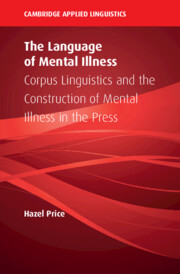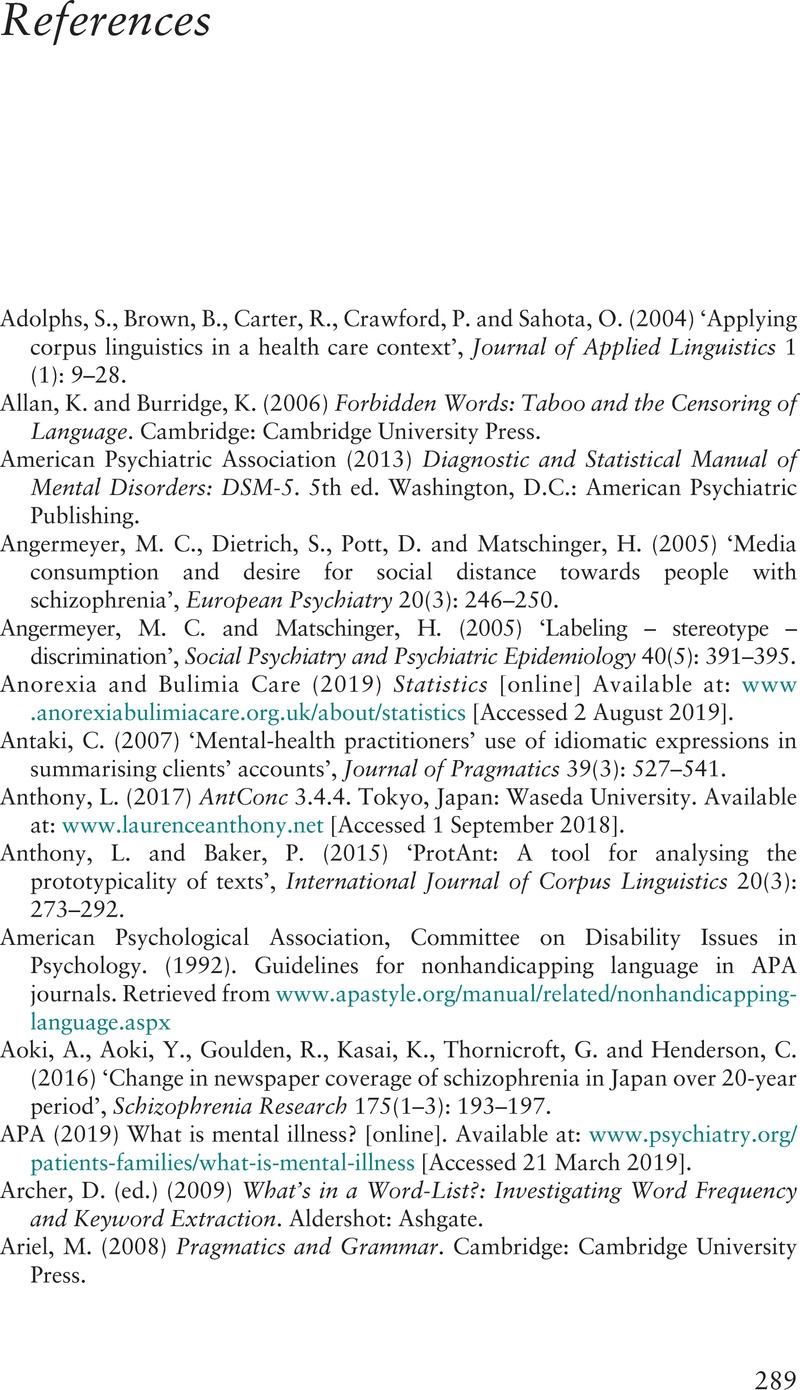 The Language of Mental Illness
The Language of Mental Illness Book contents
- The Language of Mental Illness
- The Cambridge Applied Linguistics Series
- The Language of Mental Illness
- Copyright page
- Dedication
- Contents
- Figures
- Tables
- Acknowledgements
- 1 Introduction
- 2 The Language of Mental Illness
- 3 Analytical Method 1
- 4 Analytical Method 2
- 5 Corpus Construction
- 6 The Shifting Meaning of Mental Health and Mental Illness
- 7 Named, Labelled and Referred to: People with Mental Illness in the MI 1984–2014 Corpus
- 8 ‘Suffering’ Illnesses and ‘Experiencing’ Symptoms
- 9 Do Newspaper Reports Accurately Represent the Symptoms of Mental Illness?
- 10 Conclusion
- References
- Index
- References
References
Published online by Cambridge University Press: 05 May 2022
- The Language of Mental Illness
- The Cambridge Applied Linguistics Series
- The Language of Mental Illness
- Copyright page
- Dedication
- Contents
- Figures
- Tables
- Acknowledgements
- 1 Introduction
- 2 The Language of Mental Illness
- 3 Analytical Method 1
- 4 Analytical Method 2
- 5 Corpus Construction
- 6 The Shifting Meaning of Mental Health and Mental Illness
- 7 Named, Labelled and Referred to: People with Mental Illness in the MI 1984–2014 Corpus
- 8 ‘Suffering’ Illnesses and ‘Experiencing’ Symptoms
- 9 Do Newspaper Reports Accurately Represent the Symptoms of Mental Illness?
- 10 Conclusion
- References
- Index
- References
Summary

- Type
- Chapter
- Information
- The Language of Mental IllnessCorpus Linguistics and the Construction of Mental Illness in the Press, pp. 289 - 309Publisher: Cambridge University PressPrint publication year: 2022
